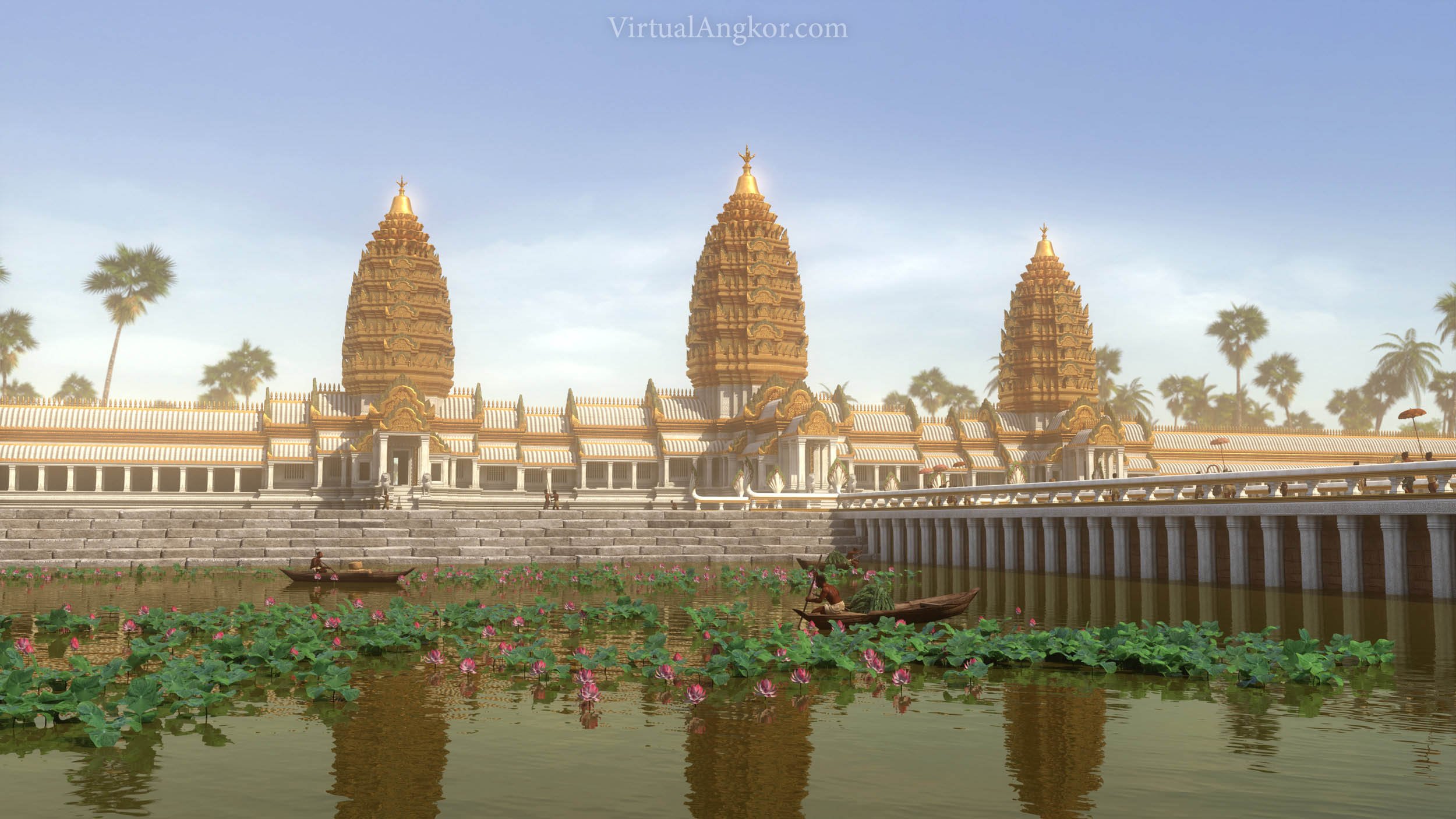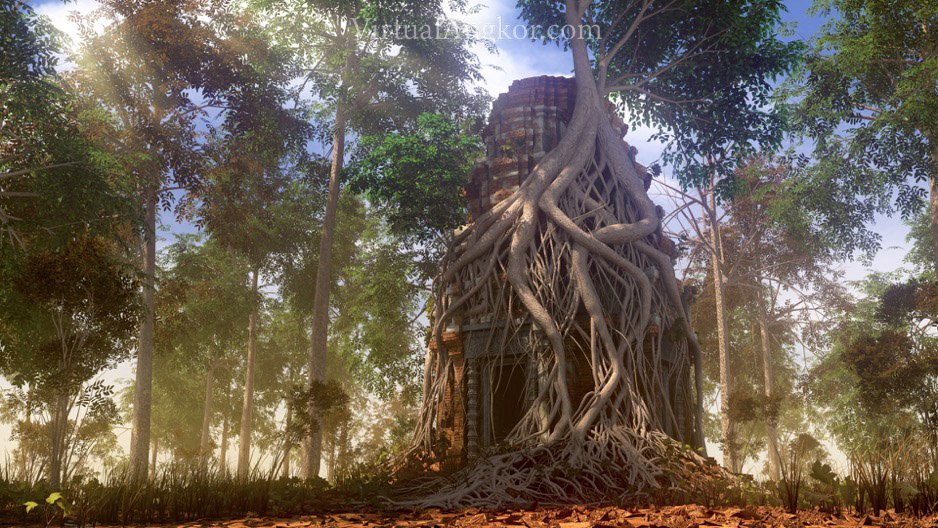Theme Three: Climate Vulnerability
In the fourteenth century, the Khmer empire began a process of slow decline that continued until its final collapse in the fifteenth century. Population in greater Angkor declined rapidly although the city was never fully abandoned. The Virtual Angkor project simulates greater Angkor at its peak around 1300 so it doesn’t show this long process of decline but some of the factors that underpinned this later collapse are present in our model.
Scholars once thought that an external invasion had resulted in Angkor’s sudden collapse and abandonment. Now the scholarly consensus is that a range of different factors came together to a initiate a process of decline rather than a moment of sudden collapse. While the precise mix of factors continue to be debated, recent archaeological and climatic research suggests that variations in climate, particularly long droughts combined with intense monsoons, were a significant contributing factor. A change in the weather systems that regulated monsoonal rains resulted in a severe drought that dried up the barays (reservoirs) around Angkor and put intense pressure on the primarily agricultural economy. For much of its existence, Angkor depended heavily on monsoonal rains and the use of water captured during the monsoon season and stored in barays to irrigate crops. To alleviate the droughts brought on by this change in climate, Khmer engineers undertook large-scale modifications of their existing water management system and embarked on an ambitious water diversion project. This proved, however, a costly mistake as they were eventually caught unprepared by unusually intense monsoon rains that overwhelmed the water management infrastructure and caused severe erosion and flooding across Angkor.
In an important 2010 article, a group of scholars argued for the importance of considering climate as a contributing factor in Angkor’s eventual collapse. They write:
The “hydraulic city” of Angkor, the capitol of the Khmer Empire in Cambodia, experienced decades-long drought interspersed with intense monsoons in the fourteenth and fifteenth centuries that, in combination with other factors, contributed to its eventual demise. The climatic evidence comes from a seven-and-a-half century robust hydroclimate reconstruction from tropical southern Vietnamese tree rings. The Angkor droughts were of a duration and severity that would have impacted the sprawling city’s water supply and agricultural productivity, while high-magnitude monsoon years damaged its water control infrastructure. Hydroclimate variability for this region is strongly and inversely correlated with tropical Pacific sea surface temperature, indicating that a warm Pacific and El Niño events induce drought at interannual and interdecadal time scales, and that low-frequency variations of tropical Pacific climate can exert significant influence over Southeast Asian climate and society.
In 2018, a new article by Dan Penny and other scholars explored how climate variability placed unprecedented strain on the sprawling infrastructure at Angkor.
Complex infrastructural networks provide critical services to cities but can be vulnerable to external stresses, including climatic variability. This vulnerability has also challenged past urban settlements, but its role in cases of historic urban demise has not been precisely documented. We transform archeological data from the medieval Cambodian city of Angkor into a numerical model that allows us to quantify topological damage to critical urban infrastructure resulting from climatic variability. Our model reveals unstable behavior in which extensive and cascading damage to infrastructure occurs in response to flooding within Angkor's urban water management system. The likelihood and extent of the cascading failure abruptly grow with the magnitude of flooding relative to normal flows in the system. Our results support the hypothesis that systemic infrastructural vulnerability, coupled with abrupt climatic variation, contributed to the demise of the city. The factors behind Angkor's demise are analogous to challenges faced by modern urban communities struggling with complex critical infrastructure.
Dan Penny, Cameron Zachreson, Roland Fletcher, David Lau, Joseph T Lizier, Nicholas Fischer, Damian Evans, Christophe Pottier, Mikhail Prokopenko, “The demise of Angkor: Systemic vulnerability of urban infrastructure to climatic variations”, Sciences Advances 17 (2018).
Together these articles show how Angkor’s decline cannot be separated from climate variability and change.
Questions
How did the climate shift in this period? How did Khmer engineers try to deal with climate variability?
As communities across the world face new threats brought about by climate change, what lessons can we draw from the role played by climate variation in the collapse of the Khmer Empire?
How did changes in climate impact the massive infrastructure system at Angkor? Does this remind you of anything today? How fragile was Angkor’s highly sophisticated infrastructure?
Examine the images below or move to the next module.







